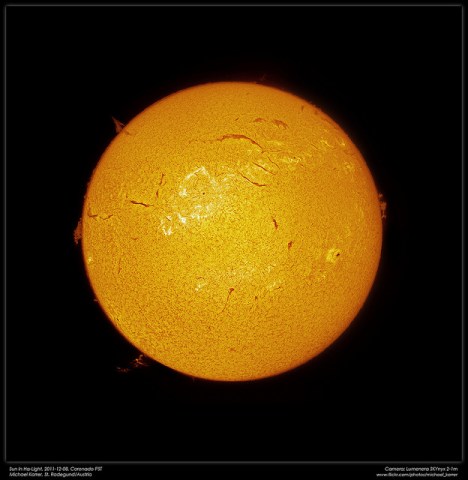Miserable Alien Life is Possible Around Bigger, Brighter and Hotter Stars
At least they're not death stars.
Move over sun, there may be a bigger star to steal the spotlight. Recent studies suggest that hotter and brighter stars are capable of providing the right conditions to form life.
Usually, the same conditions apply all over the universe when searching for life elsewhere. The star would be similar if not the same as our beautiful sun. However, a recent paper published in The International Journal of Astrobiology shows that doesn’t have to be the case. Scientists believe that if life could exist around smaller, cooler stars, then it is likely that it could cope with larger, brighter stars as well. The research looks at some of the basics for slightly larger stars known as F-Type main sequence stars. If you don’t know what that means, here’s an HR diagram which should give an idea of where main sequence stars fall, like the sun.
The main sequence stars run diagonally from the upper left corner to the bottom right corner across the chart and are not as deadly as the infamous O-type death stars in Orion that immediately kill the chances of planets forming. However, they do give off a lot of UV and do not live as long as smaller main sequence stars. This makes it difficult for life to form since it’s not given enough time. In spite of this knowledge, the new research doesn’t rule out F-type stars as being sustainable for alien life. They may be the brightest version of our sun, but it is the brightest version that could still possibly allow it to happen.
Life is determined by how long a star lives. Earth and the sun is about over 4 billion years old. F-type stars can live for as little as 2 billion years to 4 billion years. So, just based on the time-span alone allows the opportunity for alien life to form.
Co-author, Manfred Cuntz states,
“The lifetimes of F-type stars on the main sequence appear to be sufficiently long for life having a chance to start and to flourish.”
That’s still a blink of an eye in this universe, so those planets are still ultimately doomed. We must also consider that if life were by some chance to form around a more intense star, naturally it’s shine and glare would be much brighter for the planet. That being said, the UV rays would damage life on the alien planet anyway and/or it would be very, very hot. This is does not mark the end for life however if we take into account that the planets formed similar atmospheric features like the earth to shield it from harmful rays. There’s still the problem of the glaring sun. On a brighter side, since the star is bigger, this allows more room for life to form on planets that may be further away.
There seems to be a lot of “what ifs” and possibilities arising from this new research, and although it’s cool that some sort of life is possible to form around bigger stars, it sounds like a pretty miserable one.
(via Phys.org, images via Michael Karrer, ESO)
- Some paid almost $1 million for a possibly fake Apollo 15 moon camera
- Astronomers may have found Earth’s twin
- Explanation of the Big Bang Breakthrough for dummies
Have a tip we should know? tips@themarysue.com
